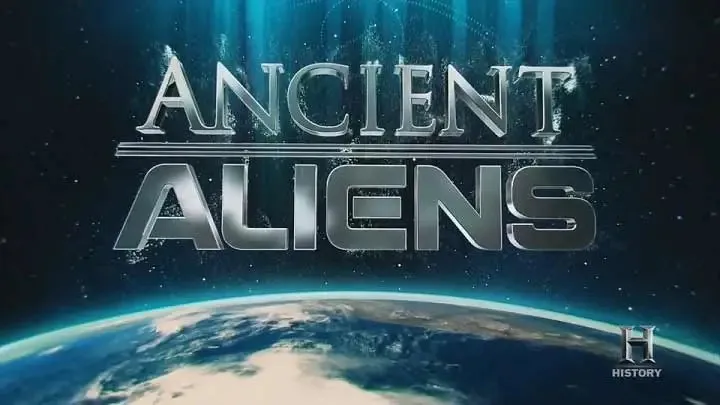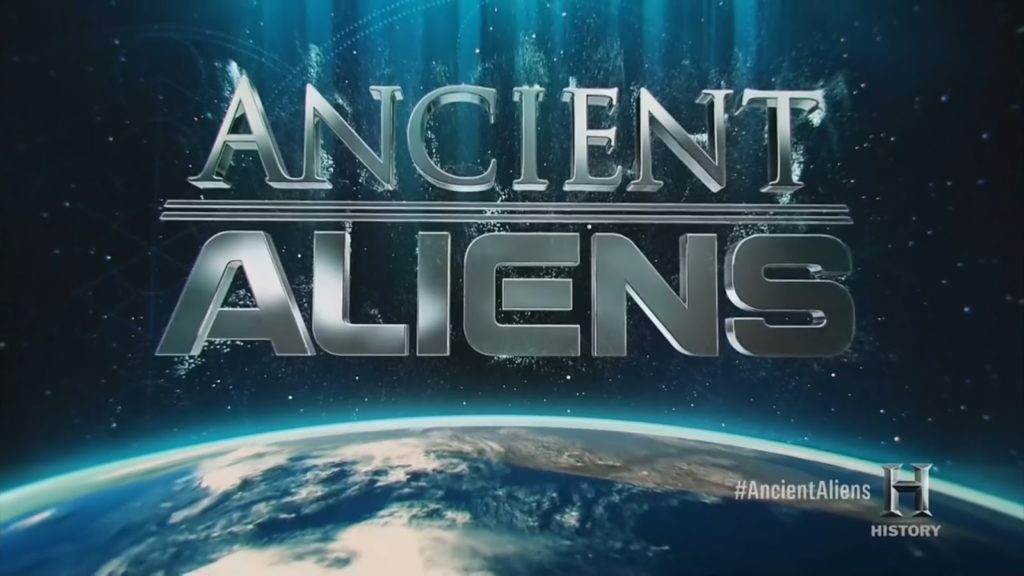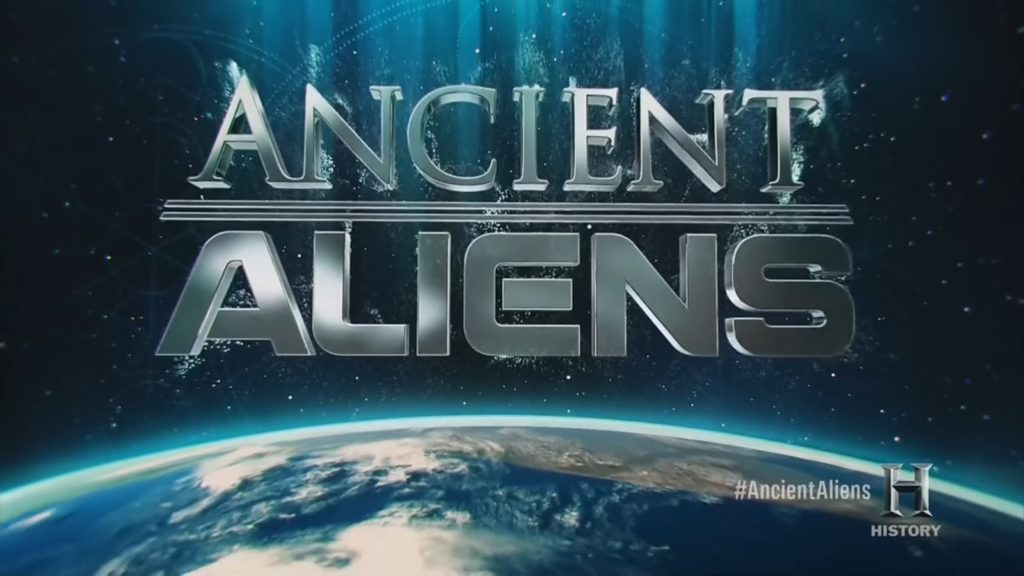Ancient Aliens Origins episode 1: The idea that ancient civilizations might have had access to advanced technology is one of the most intriguing elements of the Ancient Astronaut theory. Evidence of this can be found in the awe-inspiring engineering achievements seen in ancient megalithic sites across the globe. These monumental structures continue to baffle archaeologists and engineers alike. Even with modern machinery and techniques, replicating such feats would pose a significant challenge today.
At the heart of these enigmas lie colossal stones, some weighing hundreds of tons, precisely cut and seamlessly fitted together without the aid of mortar. The sophistication of these constructions, particularly their accuracy and durability, hints at something more than just human ingenuity. Could it be that these ancient builders had access to technologies far beyond their time? Or perhaps, as some believe, they were helped by beings from beyond our world?
To delve deeper into these mysteries, experts such as Giorgio Tsoukalos, William Henry, and Jason Martell have dedicated years of research to examining the most enigmatic archaeological sites. These scholars revisit the archives of the popular series Ancient Aliens and embark on a global investigation that spans thousands of years and traverses continents. Their journey takes them to places that still leave us in awe today: the Great Pyramids of Giza, Puma Punku in Bolivia, Nan Madol in the Pacific, and Baalbek in Lebanon, to name a few.
One of the most iconic sites, Giza’s pyramids, especially the Great Pyramid, is often considered a masterpiece of engineering. The massive stones used in its construction were transported over great distances, some from quarries hundreds of miles away. How could such primitive civilizations move such heavy stones with only basic tools? The precision with which the blocks are laid, aligned almost perfectly with the cardinal points of the compass, adds to the mystery. Some theorists suggest that this level of exactitude could have only been achieved with the help of advanced instruments or extraterrestrial guidance.
Similarly, Puma Punku in Bolivia presents an even more perplexing puzzle. Located high in the Andes, this ancient site features megalithic stones weighing up to 100 tons. These stones are not only massive but intricately carved with incredible precision. The cuts in the stone are so exact that they resemble modern machining. How a pre-industrial society managed to achieve this level of craftsmanship, especially at such high altitudes, remains a mystery. Theories abound, with some suggesting that extraterrestrial visitors shared their advanced technology with the local people, allowing them to build in ways that defy explanation.
Moving across the world to the remote island of Pohnpei in the Pacific Ocean, the ancient city of Nan Madol raises even more questions. Built on a series of small, artificial islands, the city’s foundations are composed of enormous basalt blocks, some weighing several tons. What makes Nan Madol so unique is its isolation. Constructing such a city, using such massive stones, in the middle of the ocean seems almost impossible. How did an ancient society, without the benefit of modern transportation or tools, build a city on the water? Some suggest that the builders had access to technology or knowledge that has been lost to time, or perhaps, they had help from visitors not of this Earth.
Then, there is the awe-inspiring site of Baalbek in Lebanon. This ancient city is home to the Temple of Jupiter, which rests on a foundation of immense stones known as the Trilithon. These stones, weighing over 800 tons each, are the largest quarried stones ever used in construction. The sheer size and weight of these blocks pose one of the greatest mysteries in ancient engineering. How were they transported from the quarry and lifted into place with such precision? No modern crane could manage such a task with ease, let alone the people of Baalbek 2,000 years ago. Could extraterrestrial intervention have played a role?
These sites and others like them continue to fuel debates over the origins of such extraordinary feats of engineering. While mainstream archaeologists attribute the achievements to human ingenuity, skill, and perseverance, the Ancient Astronaut theory offers a tantalizing alternative. Proponents argue that the knowledge required to construct these wonders may have been handed down by advanced beings from elsewhere in the cosmos. Whether these beings were gods, as many ancient texts describe, or technologically superior aliens, their influence on human history could be profound.
The argument for advanced technology, perhaps even extraterrestrial in origin, challenges our understanding of human history. It forces us to question how civilizations with limited tools and resources could achieve such monumental accomplishments. Were they simply more advanced than we give them credit for? Or is there a missing piece of the puzzle—an outside influence that gave them the means to build in ways that even today’s engineers would find daunting?
The answers to these questions remain elusive, but one thing is certain: ancient megalithic sites stand as a testament to the brilliance and resourcefulness of those who came before us. They challenge our perceptions of what was possible in the ancient world and invite us to keep searching for answers. As experts like Tsoukalos, Henry, and Martell continue their investigations, they hope to uncover more clues that could either confirm or debunk the idea that extraterrestrial beings played a role in humanity’s greatest engineering triumphs.
In the end, whether these ancient wonders were the work of human hands alone or with the help of celestial visitors, they continue to inspire awe and wonder. They serve as a reminder of the incredible achievements of the past and the enduring mysteries that still surround them. The truth, as they say, is out there, waiting to be discovered.
Ancient Aliens Origins episode 1
A Glimpse into Ancient Megaliths and the Mysteries Surrounding Them
Ancient Wonders: Foundations of a Forgotten Era
Ancient megalithic structures stand as remarkable testaments to the ingenuity and determination of early civilizations. Sites like the pyramids of Giza in Egypt, Saxehuaman in Peru, Puma Punku in Bolivia, and Baalbek in Lebanon are awe-inspiring in their scale and complexity. These monuments, built with enormous stone blocks often weighing several tons, leave us with numerous questions regarding their construction techniques and their significance in the societies that built them.
The pyramids of Giza, with their precise alignment and towering stature, have baffled historians and engineers alike. Saxehuaman, with its seemingly melted stones that fit together perfectly without mortar, raises questions about the level of technological sophistication that existed thousands of years ago. Puma Punku, with its laser-sharp cuts and precisely interlocking blocks, defies our understanding of ancient stonework. Baalbek, with its colossal stones—some weighing over a thousand tons—seems almost impossible to have been constructed with the tools available at the time. These structures reflect an architectural mastery that appears well beyond the known capabilities of their respective periods.
Such achievements continue to have an enduring impact on modern society, not only as cultural and historical landmarks but also as symbols of a lost knowledge that may still hold valuable lessons for us today. The ingenuity required to create these wonders is an enduring source of fascination, prompting us to question the limits of human potential.
The Theory of Ancient Extraterrestrial Influence
The mysteries of these ancient wonders have given rise to a theory that seems to bridge the gap between the impossible feats of engineering and the tools supposedly available to ancient civilizations—the ancient astronaut theory. This theory proposes that extraterrestrial beings visited Earth in ancient times, providing early human civilizations with advanced technologies or knowledge that enabled them to create these remarkable structures.
The ancient astronaut theory has gained popularity over the past several decades, primarily due to the seeming incongruities between what early humans are believed to have been capable of and what they achieved. Proponents argue that the precision and complexity of these ancient constructions imply an external source of knowledge—perhaps a technologically advanced extraterrestrial civilization that took an interest in human development. From the intricate carving of hard stones at Puma Punku to the monumental stones of Baalbek, the evidence put forth by ancient astronaut theorists challenges the mainstream archaeological perspective.
Exploring this theory not only invites us to re-examine our understanding of ancient history but also encourages us to consider the possibility that human history is more interconnected with the cosmos than previously thought. Could it be that our ancestors were aided by visitors from the stars? This chapter sets the stage for a deeper exploration of these fascinating questions, examining how the improbable achievements of the past might point to influences from beyond our world.
Why Understanding the Past Is Crucial for the Future
The mysteries of ancient structures are more than mere puzzles of the past—they represent a critical piece of our understanding of human evolution. By studying these monuments, we gain insights into the capabilities and aspirations of our ancestors, and perhaps even clues about extraterrestrial contact that could redefine our place in the universe. This understanding can fuel our curiosity and drive to innovate, as the technology and processes hypothesized to have been used by ancient civilizations could inspire new advancements today.
For instance, the precision of stone-cutting at sites like Puma Punku or the transportation of colossal stones at Baalbek hints at techniques that, if understood, could revolutionize our own engineering methods. Moreover, these ancient accomplishments challenge us to think beyond the limitations we impose on ourselves, opening the door to the possibility that humanity’s potential is far greater than we realize.
The possibility of extraterrestrial intervention also carries profound implications for our understanding of technology and knowledge. What if the technologies attributed to extraterrestrials were merely advanced forms of knowledge that humanity has lost over the millennia? The pursuit of these questions could ultimately help us rediscover lost techniques, foster a deeper connection with our past, and redefine our trajectory into the future.
As we delve into the mysteries of our ancestors, we find not only a reflection of human creativity and resilience but also a reminder that we may not be alone in the universe. The implications of this realization could be transformative, influencing our cultural, technological, and even spiritual development. Understanding our past is, therefore, crucial—not only to honor our heritage but also to guide our future exploration of the world and the stars beyond.
Engineering Marvels Beyond Comprehension
Megalithic Stones: The Impossibility of Human Transport?
One of the most striking aspects of ancient megalithic sites is the sheer size and weight of the stones used in construction. Examples like the Temple of Jupiter at Baalbek and the fortress of Saxehuaman in Peru feature stones that weigh hundreds, even thousands of tons. Moving such massive stones would be a challenge for even today’s engineers using the most advanced technology.
Mainstream archaeologists often propose that these stones were moved using primitive tools such as wooden rollers, ropes, and sledges, combined with the manpower of thousands of laborers. However, ancient astronaut theorists suggest that such methods would have been insufficient given the enormity of the task. Instead, they argue that advanced technologies—possibly provided by extraterrestrial visitors—were used to move and position these colossal stones.
At Baalbek, for instance, the Trilithon consists of three of the largest stones ever used in construction, each weighing approximately 800 tons. Moving and positioning these stones with such precision would require incredible logistical planning, leading some to propose theories involving anti-gravity devices or unknown machinery capable of levitating and transporting these monoliths. Similarly, the stones at Saxehuaman appear to fit together so precisely that not even a sheet of paper can be inserted between them, indicating a level of engineering expertise that seems beyond what was available to ancient cultures.
These megalithic marvels push the boundaries of what we believe early civilizations were capable of achieving, and they remain a source of fascination and debate. Could it be that the technology used to transport these stones was lost over time, or perhaps provided by an advanced civilization from beyond Earth?
Precision Cutting and Quarrying Techniques
Another aspect of these ancient sites that continues to baffle researchers is the precision with which hard stones were cut and shaped. Chris Dunn, an engineering expert, has suggested that the cuts made in solid granite and diorite—materials that are extremely hard and difficult to work with—appear to have been made with tools far more advanced than those available during the periods in which these structures were built.
At Puma Punku in Bolivia, blocks of andesite are cut with such accuracy that the surfaces appear as if they were sliced with a laser. The interlocking nature of the blocks, with perfectly fitted grooves and protrusions, suggests a prefabrication process that required detailed planning and advanced tools. Dunn has argued that the level of precision seen at Puma Punku could only have been achieved with machinery such as large circular saws or drills—tools that mainstream archaeology insists were not available to ancient cultures.
Similarly, the quarries at Giza contain evidence of large, deep cuts in granite blocks that suggest the use of saws with diameters of over 30 feet. The presence of such tool marks challenges the conventional view that copper chisels and stone hammers were sufficient to achieve the kind of precision needed to build the Great Pyramid and the surrounding structures. These findings point to the possibility that ancient civilizations may have possessed, or had access to, advanced technology that has since been lost to history.
Theories on Stone Manipulation: Melting, Levitation, and Acoustic Techniques
In addition to precision cutting, there are other theories about how ancient builders manipulated stone. Some researchers believe that the stones at Saxehuaman and other sites show signs of having been softened or even melted before being put into place. This theory is supported by the seemingly organic shapes of the stones, which fit together like pieces of a jigsaw puzzle, without the use of mortar. According to local legends, the builders possessed a chemical substance capable of softening stone, allowing them to mold it into the desired shape before it hardened again.
Another theory suggests that ancient builders used acoustic levitation to move massive stones. This idea is rooted in the legends of various cultures, which speak of stones being moved through sound or chanting. Proponents of this theory argue that by using certain frequencies, ancient people were able to reduce the weight of the stones, making them easier to transport. Acoustic levitation, while still largely theoretical today, has been demonstrated in laboratory settings, lending some credence to the idea that sound could have been used to assist in construction.
These alternative theories, while often dismissed by mainstream archaeologists, provide intriguing possibilities for how ancient civilizations might have overcome the seemingly insurmountable challenges of working with such massive stones. Whether through chemical processes, acoustic levitation, or the assistance of extraterrestrial visitors, the methods used by ancient builders remain one of the greatest mysteries of our past.
Conclusion Ancient Aliens Origins episode 1
As we conclude this exploration of ancient megalithic sites and the mysteries surrounding them, it becomes clear that humanity’s past holds more questions than answers. These monumental achievements in engineering, scattered across the globe, stand as towering reminders of our ancestors’ incredible capabilities. Yet, they also suggest the possibility that something beyond our current understanding was at play. Were these ancient builders simply more resourceful and innovative than we give them credit for, or was there a guiding hand, perhaps from the stars?
What remains certain is that the debate continues. Theories of extraterrestrial intervention, lost knowledge, or forgotten technologies compel us to keep digging, both literally and figuratively, into our history. These structures—whether in Giza, Baalbek, or Puma Punku—serve as enduring puzzles that beckon us to challenge what we think we know about the past.
Moreover, these ancient sites not only captivate our curiosity but also inspire a deep sense of wonder. Like looking up at the stars, they make us feel small yet part of something larger, something grander. Perhaps the true lesson from these ancient wonders is that the limits of human potential are boundless. Whether guided by extraterrestrial forces or not, our ancestors demonstrated that seemingly impossible tasks could be achieved through creativity, persistence, and ingenuity.
As we continue to explore these enigmas, we may one day discover the truth behind these marvels. Until then, they remain beacons of mystery, reminding us that sometimes, the most profound answers lie just out of reach, waiting for us to take that next step toward understanding our shared human history.
FAQ Ancient Aliens Origins episode 1
Q: What is the Ancient Astronaut theory, and how does it relate to ancient megalithic sites?
A: The Ancient Astronaut theory proposes that extraterrestrial beings visited Earth in the distant past, influencing early human civilizations. Specifically, proponents suggest that these advanced beings aided in the construction of monumental structures like the pyramids of Giza and Puma Punku, which seem to defy the technological capabilities of their time.
Q: Why are sites like Puma Punku and Baalbek considered so enigmatic by researchers?
A: Puma Punku in Bolivia features incredibly precise stonework, with massive blocks interlocking seamlessly. Similarly, Baalbek in Lebanon boasts the largest quarried stones ever used in construction, weighing hundreds of tons. These feats are difficult to explain with conventional archaeological theories, leading some to propose alternative explanations.
Q: How does the Ancient Astronaut theory explain the transportation of massive stones used in structures like the Great Pyramid and Baalbek?
A: Mainstream archaeology suggests ancient people used basic tools and manpower to move these colossal stones. However, Ancient Astronaut theorists propose that advanced technologies, potentially introduced by extraterrestrial visitors, were necessary to achieve such feats. They point to the sheer size and weight of the stones as evidence for this claim.
Q: What evidence suggests that ancient civilizations might have possessed advanced cutting techniques?
A: At Puma Punku, the laser-like precision of the cuts in the andesite blocks suggests the use of tools far more advanced than those typically associated with ancient cultures. Furthermore, the quarries at Giza show evidence of cuts that would have required saws with enormous diameters, challenging conventional explanations.
Q: Besides advanced technology, what other theories attempt to explain the construction of ancient megalithic sites?
A: Some researchers propose that ancient builders used techniques like stone softening or acoustic levitation. For instance, legends describe the use of chemical substances to mold stone at Saxehuaman, while acoustic levitation theories suggest sound frequencies could have been used to manipulate massive stones. Although intriguing, these theories remain largely unproven.




